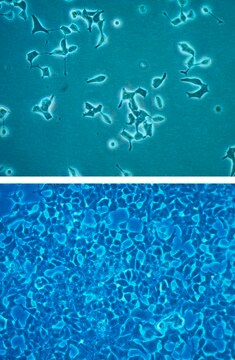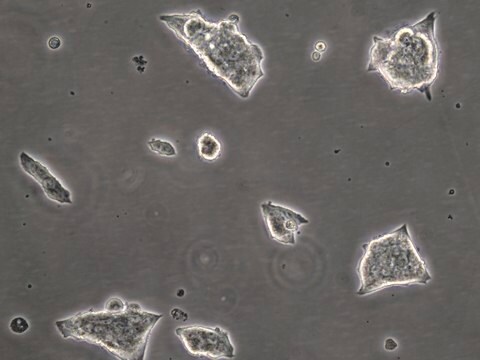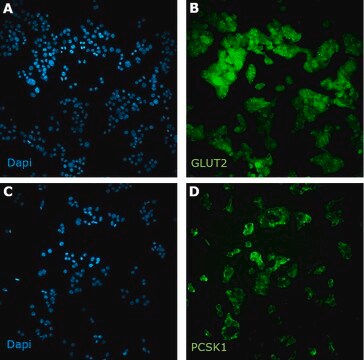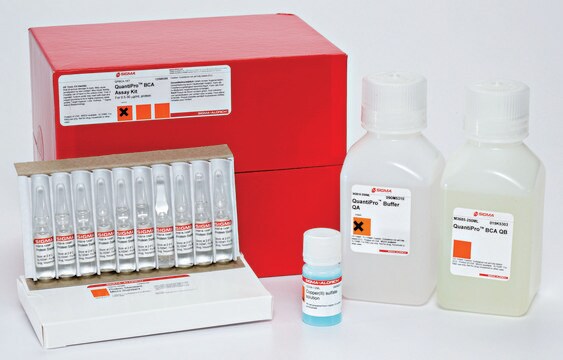SCC208
INS-1 832/3 Rat Insulinoma Cell Line
Rat
Synonym(e):
INS1 832/3, INS-1 (832/3), 832/3
About This Item
Empfohlene Produkte
product name
INS-1 832/3 Rat Insulinoma Cell Line, INS-1 832/3 rat insulinoma cell line is a useful model for insulin secretion regulation and pancreatic islet beta-cell function studies.
Biologische Quelle
rat
Methode(n)
cell culture | mammalian: suitable
Versandbedingung
ambient
Allgemeine Beschreibung
Source:
INS-1 832/3 is a derivative of INS-1 cells originally established from an x-ray induced insulinoma in rat1. The INS-1 832/3 cell line is a subclone of INS-1 that was stably transfected with a CMV promoter-human insulin expression plasmid carrying a geneticin (G418)-resistance marker for selection .
Beschreibung der Zelllinie
Anwendung
Stoffwechsel
Diabetes
Qualität
• Cells are tested negative for infectious diseases by a Mouse/Rat Comprehensive CLEAR panel by Charles River Animal Diagnostic Services.
• Cells are verified to be of rat origin and negative for inter-species contamination from mouse, chinese hamster, Golden Syrian hamster, human and non-human primate (NHP) as assessed by a Contamination CLEAR panel by Charles River Animal Diagnostic Services.
• Cells are negative for mycoplasma contamination.
Lagerung und Haltbarkeit
Haftungsausschluss
Unless otherwise stated in our catalog or other company documentation accompanying the product(s), our products are intended for research use only and are not to be used for any other purpose, which includes but is not limited to, unauthorized commercial uses, in vitro diagnostic uses, ex vivo or in vivo therapeutic uses or any type of consumption or application to humans or animals.
Lagerklassenschlüssel
12 - Non Combustible Liquids
WGK
WGK 1
Flammpunkt (°F)
Not applicable
Flammpunkt (°C)
Not applicable
Analysenzertifikate (COA)
Suchen Sie nach Analysenzertifikate (COA), indem Sie die Lot-/Chargennummer des Produkts eingeben. Lot- und Chargennummern sind auf dem Produktetikett hinter den Wörtern ‘Lot’ oder ‘Batch’ (Lot oder Charge) zu finden.
Besitzen Sie dieses Produkt bereits?
In der Dokumentenbibliothek finden Sie die Dokumentation zu den Produkten, die Sie kürzlich erworben haben.
Unser Team von Wissenschaftlern verfügt über Erfahrung in allen Forschungsbereichen einschließlich Life Science, Materialwissenschaften, chemischer Synthese, Chromatographie, Analytik und vielen mehr..
Setzen Sie sich mit dem technischen Dienst in Verbindung.






